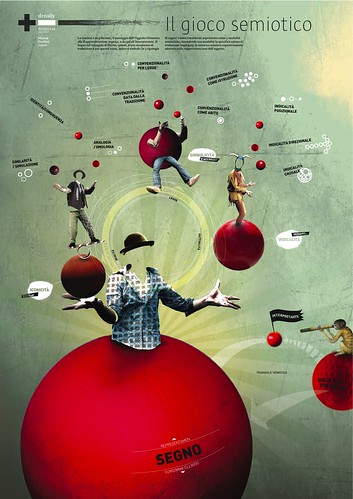Icon, index and symbol aren’t only three types of signs. First of all they are three semiotic modes. The semiosis is a process (of transformation, of translation, of correlation or stabilization of correlations…) where the dynamical object evolves into the sign representation and then into the interpretant. As a process, the semiosis is defined by three modes:
- the iconic mode: it’s an act of perception and reception;
- the indexical mode: it’s an act of relation and action;
- the symbolic mode: it’s an act of cognition and generalization.
As a useful resource we kindly recommend Prof. Salvatore Zingale’s blog.

ModalitĂ semiosiche, originally uploaded by densitydesign.
The semiosis is the process where the dynamical object evolves into the sign representation and then into the interpretant. The sign in Peirce’s triangle is therefore a tool for translation. For this reason icon, index and symbol (the three types of sign) have to be considered first of all as three semiotic modes, where for “mode” we mean the specific action made for translation: the measure or the way cognitively assumed to represent the object.

